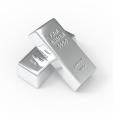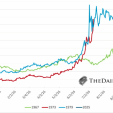Euro Mixed After Eurozone Economic Confidence Index
Frankfurt (May 28) The European currency showed mixed trading against the other major currencies in the European session on Wednesday after the release of the Eurozone economic sentiment index in May.
Eurozone economic sentiment improved more than expected in May driven by higher confidence among consumers and industry managers, survey results showed today.
The economic sentiment index rose to 102.7 in May from 102 in April, the European Commission said. The score stood above the expected level of 102.2.
Consumer confidence brightened in May, thanks to consumers' more optimistic assessment of all components of the confidence indicator. The index rose to -7.1, the highest since September 2007 , from -8.6 in the prior month. The score matched the flash estimate published on May 21 .
Meanwhile, Germany's unemployment increased unexpectedly in May, data showed today.
The number of people out of work increased by around 24,000, the Federal Labor Agency reported. This was the first increase in six months. Economists had forecast a decline of 15,000 for May.At the same time, the jobless rate remained unchanged at seasonally adjusted 6.7%.
Germany's import prices continued to decline in April, but at a slower pace than in the previous month, figures from Destatis showed today.The import price index fell 2.4% year-on-year in April, following a sharp 3.3% drop in the previous month.
Reversing from an early low of 0.8104 against the pound, the euro rose to a 1-week high of 0.8129 and held steady thereafter. The pair closed yesterday's deals at 0.8110. If the euro extends its uptrend, it is likely to find resistance around the 0.82 area.
The euro rose to an 8-day high of 1.2234 against the Swiss franc, from an early low of 1.2223. Yesterday's closing quote of the pair was at 1.2228. If the euro extends its uptrend, it is likely to find resistance around the 1.23 area.
A leading indicator of Swiss consumption edged down in April, although remaining at the second highest level since January 2011 , a report released by UBS showed today.
The UBS consumption indicator came in at 1.72 in April, logging the second highest score since January 2011 . In March the indicator had risen sharply to 1.84.
The euro advanced to 1.4754 against the Australian dollar, from an early multi-day low of 1.4704 and held steady thereafter. The pair closed yesterday's deals at 1.4727. The next possible upside target of the euro is seen at 1.48.
The euro fell to a 5-day low of 138.64 against the yen, from an early high of 139.12 and held steady thereafter. The pair closed Tuesday's trading at 139.04. If the euro extends its downtrend, it is likely to find support around the 137.80 area.
Bank of Japan Governor Haruhiko Kuroda said in a seminar hosted by the central bank in Tokyo on Wednesday that economic stability is achieved by striking a balance between the strength of commitment and future policy flexibility is a critical issue in debating the feasibility of forward guidance.
Kuroda added that "Expectation management through communication with the market is critical to guiding the economy toward a recovery,".
The euro fell to 1.4779 against the Canadian dollar for the first time since January 11 . This may be compared to an early high of 1.4828. The pair closed yesterday's deals at 1.4808. If the euro extends its downtrend, it is likely to find support around the 1.43 area.
The euro dropped to 1.3616 against the USdollar, from an early high of 1.3638 and held steady thereafter. At yesterday's close, the pair was quoted at 1.3634. If the euro extends downtrend, it is likely to find support around the 1.35 area.
European Central Bank's Vice-President Vitor Constancio is scheduled to give press briefing on the financial stability review at 9:00 am ET in Frankurt.












